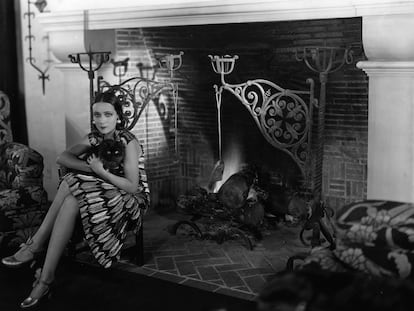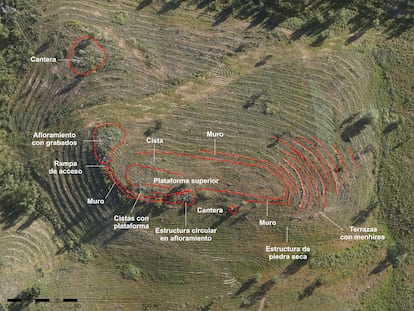Archaeologists discover one of the largest phallic sculptures of ancient Rome
The bas-relief was carved on the wall of a building excavated in southern Spain
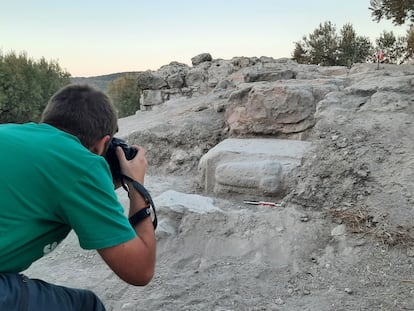

Phallic representations and amulets were common in ancient Rome, as they were considered to be good luck symbols and heralds of favorable omens. Pagan religions associated them with natural fecundity, and the phallic symbols represented the fertility god Fascinus, warding off the “evil eye.” These phalluses were common in the homes and military camps of the time, but the size of the recently discovered phallus was not at all common. Over 18 inches (0.5 meters) long, the bas-relief phallus was found in El Higuerón (municipality of Nueva Carteya, Cordoba, southern Spain), carved on a cornerstone of a large building that is currently being excavated. Project director Andrés Roldán (University of Extremadura and director of the Historical Museum of Nueva Carteya) said, “It was common to put them on the facades of houses, and soldiers carried small phallic amulets as symbols of virility. But this one is unusually large. We are currently researching whether one of similar dimensions has been previously found.”
But despite the spectacular discovery, the most important aspect of the archaeological excavation is the building upon which the large penis was carved. Professor Andrés María Adroher Auroux is leading a group of archaeologists from the University of Granada (Spain) that is part of a larger team of experts from the Historical Museum of Nueva Carteya and the Center for Archaeological Research of Southeastern Spain (Centro de Estudios de Arqueología Bastetana ). Their mission is to excavate and study this ancient Roman structure built over an even older Iberian settlement. Its sturdy, terraced walls once supported a tower-shaped edifice with a still unknown function.
The initial excavations conducted in this area of rolling hills and olive orchards during the mid-1960s discovered the first walled Iberian settlement dating from the 5th century BC. But the Roman conquest later destroyed the existing settlement, and the 65 x 55 foot (20 x 17 meters) tower-shaped building was erected on its ruins.
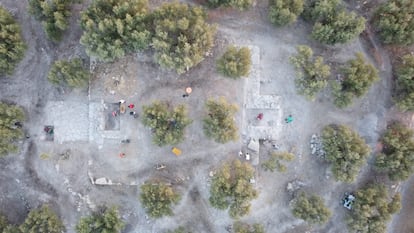
Andrés Roldán describes the scene. “They razed the settlement and used the ancient Iberian fortifications as foundations [for the new buildings]. The various Iberian edifices in the area, such as the one in Nueva Carteya, were built on strategic topographical points and suggest a much more complex history than one would expect from these archaeological sites.”
Most of the excavated buildings of the region are described in a 1970 paper on local fortified precincts by Javier Fortea and Juan Bernier that suggests a possible connection between these structures and Hannibal, the Carthaginian general, who marched his army though southern Iberia at the end of the third century BC. However, more recent research indicates that they are clearly Roman in origin.
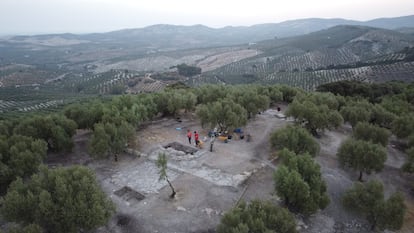
The team of archaeologists refer to the structure at El Higuerón as a “monumental Roman building” with perimeter walls six feet thick (1.8 meters) made of large limestone blocks. Underground storerooms for agricultural products have been discovered, along with various construction materials like fragments of stucco, Roman concrete (opus caementicium), black and white blocks, tiles and storage containers with lids. This year, the archaeologists are focused on excavating an access point through one of the facades to the tower, in addition to cleaning the perimeter wall, “…which is one of the more massive features of the site,” according to Roldán.
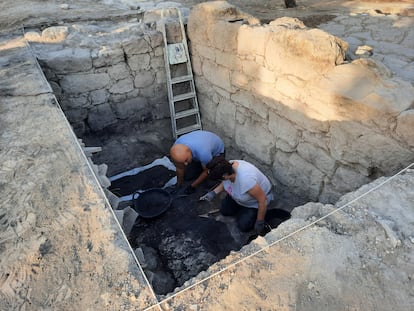
The building was abandoned by the Romans during the first century Flavian dynasty, and later renovated by the Moors during their Iberian reign. The Moors eliminated parts of the structure that that were not useful, such as the underground storerooms, and reinforced weak areas like the access door. When the Christians drove out the Moors in the 13th century, the building was abandoned and forgotten until it was rediscovered in the 1960s.
The municipality of Nueva Carteya has now purchased the land where the Ibero-Roman structure stands. It intends to sponsor more research and wants to create an on-site museum to display the archaeological trove, including the phallus about which little is known, other than its unusual dimensions.
Tu suscripción se está usando en otro dispositivo
¿Quieres añadir otro usuario a tu suscripción?
Si continúas leyendo en este dispositivo, no se podrá leer en el otro.
FlechaTu suscripción se está usando en otro dispositivo y solo puedes acceder a EL PAÍS desde un dispositivo a la vez.
Si quieres compartir tu cuenta, cambia tu suscripción a la modalidad Premium, así podrás añadir otro usuario. Cada uno accederá con su propia cuenta de email, lo que os permitirá personalizar vuestra experiencia en EL PAÍS.
En el caso de no saber quién está usando tu cuenta, te recomendamos cambiar tu contraseña aquí.
Si decides continuar compartiendo tu cuenta, este mensaje se mostrará en tu dispositivo y en el de la otra persona que está usando tu cuenta de forma indefinida, afectando a tu experiencia de lectura. Puedes consultar aquí los términos y condiciones de la suscripción digital.
